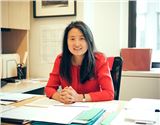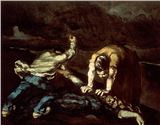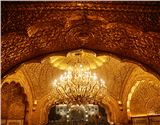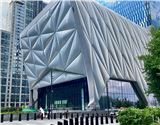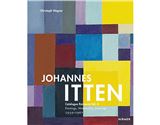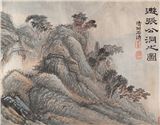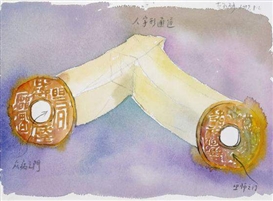Huang Yong Ping: Assumptions Questioned
Who could guess that one of China ’s most famous visual artists, known in his Chinese youth as the “Chinese” Dada, would now be a French citizen living on the outskirts of the city of Paris , and former France ’s representative at the 2004 Venice Biennale.
Jean Couteau / C-Arts
Mar 18, 2009
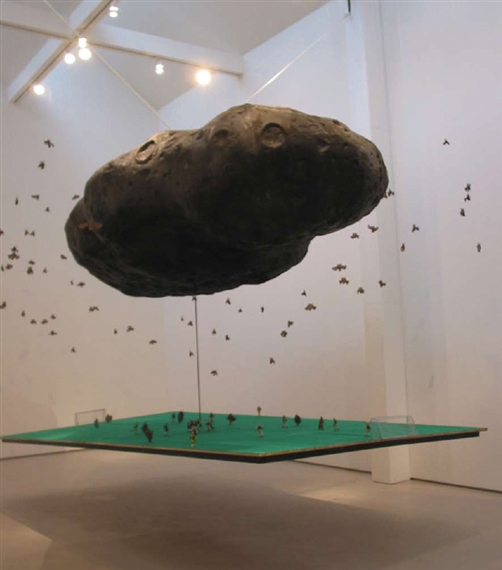
Yet, when they arrived in France, France and the world had changed, and instead of being worshippers they were closer to being iconoclasts. When Huang Yong Ping, the most famous of those artists, arrived in Paris in 1987, invited to Jean-Hubert Martin ground-breaking “Les Magiciens de la Terre” (The Magicians of the Earth) exhibition, it was not to pay his respects to the French notions of leftist politics and modern art or to gloat in Chinese nationalistic pride. It was on the contrary to deconstruct the ethnocentrist myths inherent to the notions both of Western-ness and Chinese-ness –and, by extension, the very notion of identity and cultural references around which most of us organize our lives. This deconstruction was intellectually programmed: “Instead of affirming one’s identity,“ he told me when I visited him in his small apartment in Ivry, on the outskirts of Paris, “one should make it ‘explode’ in a multiplicity of parts. Even though there are forces that want to reduce us to one single identity, we must resist it as much as we can, as things are so much more complex than that. Look at me. Nothing in my apartment indicates my nationality. And what is this so-called Chinese identity, anyway? No one can define it. We have to move beyond such things.” Yet, such an attitude does not make Huang Yong Ping an apologist of the West (see Bat Project below, a plane installation) nor a believer in some sort of global identity. No! He is too skeptical of any truth and too much aware of the resilient dark sides of cultures, nations, religions and even ordinary concepts for that. In fact what he brings about through his works—mainly installations—is a “spirit of awareness,” and hence a new consciousness. He endeavors to lay bare the paradoxes and contradictory determinations that are bearing on us as human beings and, by doing so, underlines the fundamental meaninglessness of all systems of belief and value—of societies as well as individuals. Yet Huang Yong Ping is no fool. He knows that he has to use cultural references, if only to better deconstruct them and thus make his point. Most of those references are Chinese, out of necessity. He still barely speaks French. It is his Chinese culture which provides him with the symbolic vocabulary—from Buddhism, pharmacopoeia, Chinese numerology, Feng Shui, etc—, from which he engineers a new awareness. When, in his installations, those elements are visually confronted with Western ones, they automatically lose their traditional Chinese meaning to take on a new one: it is at that stage that they become, by the artist’s sleight of hand, mere instruments of a general deconstruction of meaning and institutional identity. Bringing about a radical questioning through the visual confrontation of objects has a history that is definitely not Chinese though. But China was never totally closed to the world. It is as a young artist in Xien in the early 1980s that Huang Yong Ping became acquainted with the works of Duchamp and Beuys, as well as with the translated writings of Foucault and Wittgenstein. Indeed, his contribution to the field of art is to have given a global post-modern flavor to Duchamp and Beuys’ very peculiar techniques of achieving “social awareness” and “healing” through the arts. But his true novelty in the matter is in his deconstruction of the ethno-centric perspective and in the range of issues raised: on institutions, artistic creativity, social role of art, culture, domination, colonialism, identity and, at the end of it: on meaning, or rather its impossibility. It seems that his grinding deconstructive machine is bound to let very few ready-made ideas stand untouched.
It is impossible in the scope of this article the breadth of works covered by a prolific artist such as Huang Yong Ping. The work that brought him to the world attention, and to his invitation to France, where he settled and eventually became a citizen was his seminal: The History of Chinese Painting and the Concise History of Modern Western Art Washed in the Washing Machine for Two Minutes (1987). He had those books, he says, but could not read them. To him they were mere collections of photographs, and it was frustrating. And raised questions. So one day he simply took them from book shelves, put them in the washing machine and then switched it on; when the “washing” was done, he retrieved the resulting pulp which he then put on a wooden box. It was a revolution. “His work”, writes well-known curator Fei Dawei, “provided an answer to a significant cultural question: the mutual influence between the two cultures [Chinese and Western] does not follow any method, logic, concept or ethic, but is achieved in an uninterrupted instant. It is not about replacing one tradition by another, but rather about cultures chaotically overlapping after their original structures have been pulverized.” So much for the idealization of culture.
No less interesting was Huang Yong Ping’s questioning of the notion of creativity in House of Oracles (1989-1992). This installation consisted of various kinds of divination related objects, such as a big calendar-carved wheel, geomancy treatises etc. Yet, the artist did not intend this work to be a statement of support for divination per se. “My purpose in this work was to deconstruct the myth that art is a creative act of individuals,” he says, “And it is why I now use oracles to determine my works.” So much for the apologists of the notion of individual genius being the main determinant of creativity.
In another installation, Passage (1993-2005), Huang Yong Ping dealt with the issue of national identity. “When I go abroad,” he says, “and cross borders with my French passport, even though I am barely conversant in French, immigration officials always consider me with suspicion. It is how I came up with the idea of making a work on the notion of identity. The two signs that we see at passport control, such as ‘EU Nationals’ and ‘Others’, symbolize in a certain way contemporary concepts of nation. All countries try to distinguish ‘us’ from ‘them’. Passage—entry—passport control signs—cage—lion, all share similar meanings of exclusion. In the exhibition I transformed two doors into customs control at the airport. Because I was not allowed to use real lions, I represented them by using cages containing their smell—their feces and the carcasses they left behind.” The work speaks for itself. So much for the idealization of nationhood.
The long running Bat Project had also political overtones. It consisted of a full-scale duplicate of the cockpit section of an American EP-3 spy plane that had collided with a Chinese fighter plane in March 2001, killing the Chinese pilot. In the original incident, the plane was later dismantled and taken back to the States. Taking up this incident as the theme of his installation for the First Guangzhou Triennial in 2002, Huang Yong Ping raised the issue of power politics. Why was it called Bat Project? “Because bats work in darkness, just like spy planes,” he says. Why did he make a duplicate of the dismantled plane? “Because if the spy-plane originally symbolized absolute American power, its dismantling of this plane evoked a changing of world order, a world order that does not need a center anymore.” Interestingly, this installation was never shown at the Triennial. It was removed by foreign ministry officials before the opening of the show. So Huang Yong Ping took up again the project later, adding each time a new layer of signification: It eventually ended up at the Walker Art Center in Minneapolis (2006), the Americans thus ironically enshrining a symbol of their declining dominance in one of their iconic museums.
In Huang Yong Ping’s installations, apparent banality always hides meaning. Such as in his recent Pentagon (2007) installation consisting of a dark-baked brick miniature of the Pentagon, from which tropical trees are seen growing, a symbol of the political and military heat which characterizes the place, and of the growth of other power centers and cultures against which the Pentagon itself can do nothing in the long run. A symbol of life too, in the midst of darkness. In an essay published in this magazine, French art critic Philippe Dagen, while railing against Damien Hirst and Jeff Koons, insists that there is no valid conceptual art that does not carry critical social meaning. Huang Yong Ping’s works do just that: his works teach us that all our political and cultural assumptions ought to be systematically questioned. It is the condition both of freedom and of a better future.

